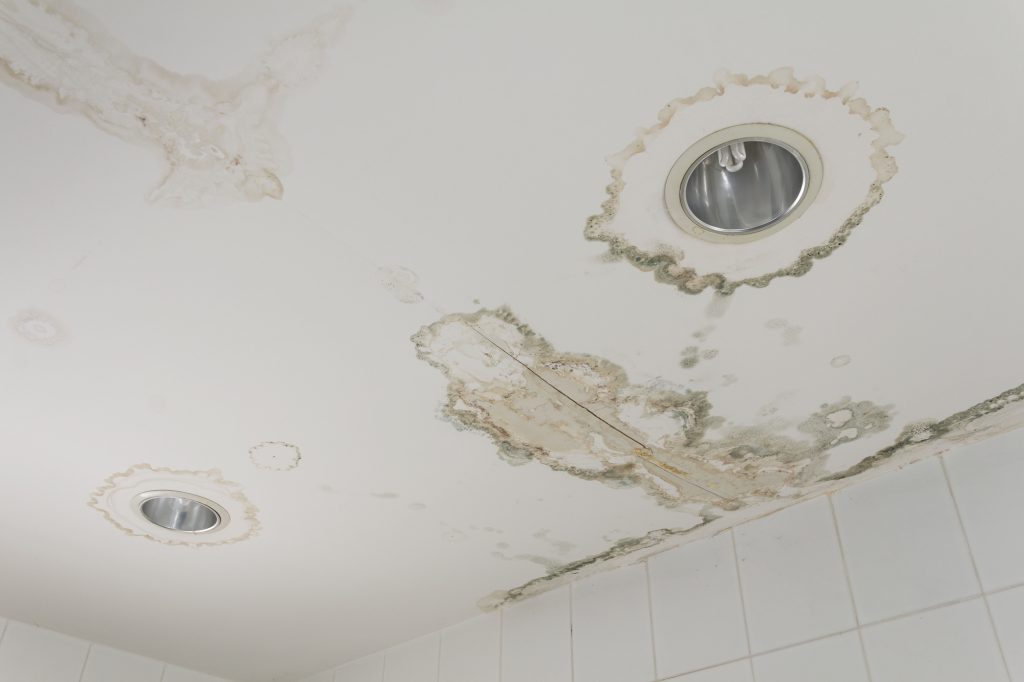Discovering a brown stain on your ceiling can be a cause for concern. You might naturally assume it’s a sign of a roof leak, but what if there’s no visible water source above it? In this article, we’ll delve into the perplexing issue of a brown stain on the ceiling but no leak, exploring the possible causes and solutions to this common homeowner’s dilemma.

The Puzzle of the Unexplained Stain
It’s not uncommon for homeowners to find mysterious brown stains on their ceilings. While these stains often suggest water damage, there are instances where no apparent leak is present. When you’re faced with such a situation, it’s essential to investigate the potential causes and address the issue promptly to prevent further damage to your home.
Understanding the Possible Causes
There are several factors that can lead to a brown stain on the ceiling without an obvious leak. Let’s explore some of the most common culprits:
1. Condensation Issues:
Condensation can occur when warm, moist air meets a cooler surface, such as a cold ceiling. This moisture can lead to discoloration of the ceiling paint or drywall, creating a brown stain. The presence of condensation can be a sign of poor ventilation in your home, particularly in areas like bathrooms or kitchens.
2. Roofing Nail Bleed-Through:
In some cases, the brown stain might be related to the construction of your home. If roofing nails were used in the ceiling framing, over time, the metal can rust, causing the stain to seep through the ceiling material. This is a cosmetic issue rather than a structural one.
3. HVAC System Problems:
Your home’s heating, ventilation, and air conditioning (HVAC) system can sometimes be the source of the problem. Ductwork or pipes near the ceiling may develop condensation or minor leaks, which can result in brown stains on the ceiling below.
4. Old Water Damage:
The stain might be the result of a historical water leak that occurred in the past. Even if the leak was repaired, the residual effects can appear as a brown stain on the ceiling. This can happen if the ceiling material was not adequately repaired or replaced after the initial water damage.
Diagnosing the Issue
1. Check for Active Leaks:
The first step is to rule out any potential sources of water leakage. Inspect the area above the stain, such as the attic or roof, during or after rain to ensure there is no active leak. Also, examine plumbing fixtures and HVAC components for any signs of water escape.
2. Monitor Weather Conditions:
Keep an eye on the stain’s appearance in different weather conditions. If it only appears during certain weather conditions, it’s more likely to be condensation-related.
3. Assess Your Home’s Ventilation:
Consider the ventilation in your home, especially in areas with frequent moisture, like bathrooms and kitchens. Improving ventilation, such as using exhaust fans, can help reduce condensation-related stains.
Addressing the Issue
1. Repaint or Repair the Ceiling:
In cases where the stain is caused by nail bleed-through or old water damage, you can opt to repaint the affected area. Use a stain-blocking primer to prevent the stain from bleeding through the new paint.
2. Improve Ventilation:
Enhance ventilation in moisture-prone areas to reduce condensation issues. Installing exhaust fans, dehumidifiers, or increasing airflow can help alleviate the problem.
3. Seek Professional Help:
If the issue persists or you’re unsure of the cause, it’s advisable to consult a professional contractor or home inspector. They can assess the situation, identify the cause, and recommend appropriate repairs.
Read too: Why Is My Ceiling Leaking Brown Water
Conclusion
A brown stain on the ceiling without an apparent leak can be a puzzling situation for homeowners. While it may not always be a sign of an active water leak, it’s crucial to investigate the cause and take appropriate action. By understanding the potential culprits and addressing the issue promptly, you can maintain the integrity and appearance of your home while ensuring a safe and comfortable living environment.